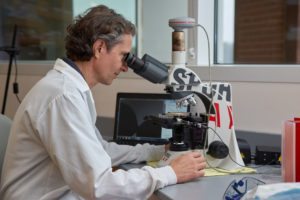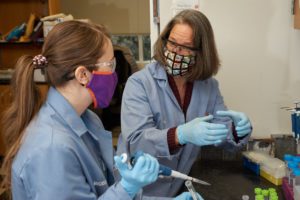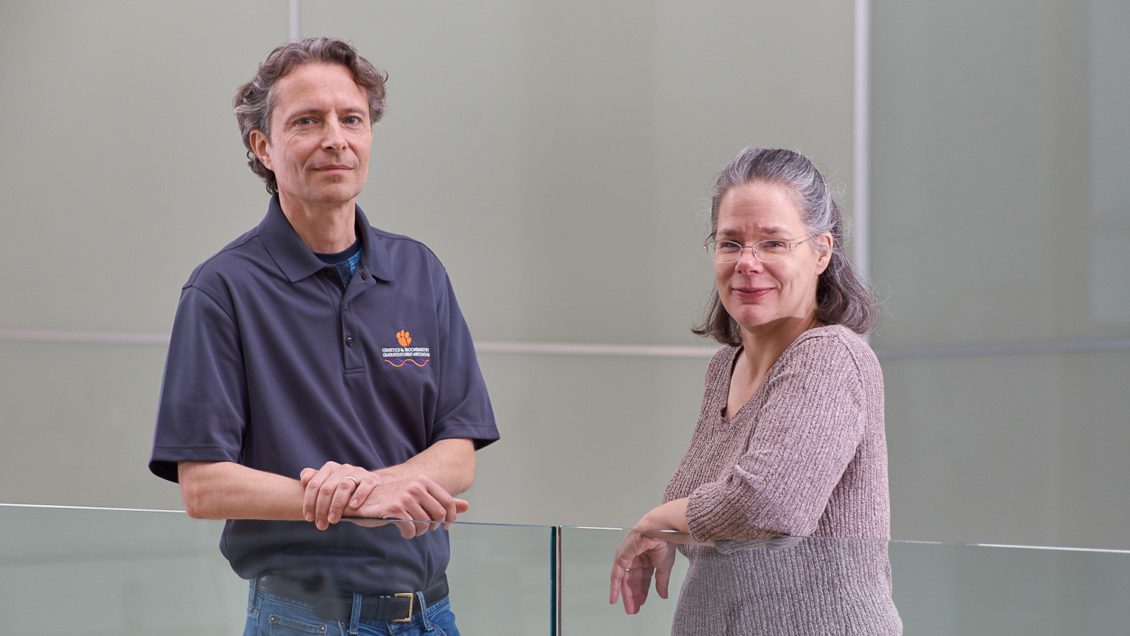A pair of Clemson University researchers are collaborating to discover why fungal pathogens become drug resistant.
Genetics and Biochemistry Associate Professor Lukasz Kozubowski and Chemistry Professor Julia Brumaghim are studying how the fungal pathogen Cryptococcus neoformans develops resistance to azole compounds, a class of fungicides that are widely used in agriculture for crop protection and as a treatment for life-threatening human fungal infections. They received a $492,000 National Science Foundation grant for the work.
Only three types of antifungal drugs exist, so drug resistance can severely limit treatment options.
Most azole compounds work by inhibiting fungi rather than killing them, which makes the drugs safer for humans, said Kozubowski, co-principal investigator on the project. That’s because both humans and fungi are eukaryotic. Therefore, drugs designed to kill fungi may also harm their human hosts. Eukaryotes are single-celled or multicellular organisms whose cells contain a distinct, membrane-bound nucleus.
Chance of drug resistance
Conversely, while fungi-inhibiting drugs are safer for humans, their use also increases the chance of drug resistance.

“We know resistance to azoles is a fact,” Kozubowski explained. “Apparently, the drugs can somehow stimulate the development of resistance. It is counterintuitive: You may think of a drug as killing or inhibiting the pathogen, but the drugs have some propensity to stimulate the development of resistance to the same drugs. So what they are supposed to kill, the drugs are actually stimulating the cells to develop a resistance to it.”
It’s rare that a fungal cell isn’t killed or inhibited by antifungal treatment — and that adds a complication for the scientists.
“The problem with resistance is that it’s quite an elusive target when it comes to understanding because essentially what we are after is an event that happens maybe one in a million times,” Kozubowski said. “You have a population of millions of cells, and unfortunately, if the drug doesn’t kill them all, there will always be that lucky cell, that one in a million, that develops something that causes resistance.”
Drug resistance is also a problem with antibiotics, Kozubowski noted.
Emerging problem
Fungal drug resistance is an emerging problem that is also growing in scope, adding to the urgency of the Clemson scientists’ work. “It’s not a last-year emerging, but in the past decades, we’ve been experiencing drug-resistant fungal infections. That’s true for bacterial infections as well,” Kozubowski said.
Ultimately, he said the researchers’ goal is to better understand how drugs such as the azole compounds stimulate the mechanism of drug resistance. A top suspect: damaged DNA.

Enter Brumaghim, the project’s principal investigator, who said she became interested in the project because her work focuses on how cellular DNA becomes damaged, which complements Kozubowski’s research.
“I got involved in the project because I found out [Kozubowski] was working on how these compounds generate reactive oxygen species like the radical species that can damage DNA,” Brumaghim recalled.
Reactive oxygen species are unstable molecules that contain oxygen and easily react with other molecules in a cell.
“He said, ‘this is the mechanism, but we know nothing about how this could happen.’ And that’s what I do. We look at how metals generate these radical species that damage DNA,” Brumaghim said
Then, the question facing Brumaghim and Kozubowski was, “what happens if you have more damage [to cellular DNA] than can be repaired,” Brumaghim said. “Then you get into trouble. If a cell cannot replicate its DNA sufficiently, it will die. It’s called ‘programmed cell death.’… The alternative to that is when you have mutations to the DNA, and the cell would be better off dying, but it doesn’t — that leads to cancer. Or with fungi, it leads to drug resistance — or that’s what we think.”Kozubowski described the interdepartmental collaboration as a “natural match.”
The College of Science pursues excellence in scientific discovery, learning, and engagement that is both locally relevant and globally impactful. The life, physical and mathematical sciences converge to tackle some of tomorrow’s scientific challenges, and our faculty are preparing the next generation of leading scientists. The College of Science offers high-impact transformational experiences such as research, internships and study abroad to help prepare our graduates for top industries, graduate programs and health professions. clemson.edu/science
Get in touch and we will connect you with the author or another expert.
Or email us at news@clemson.edu

